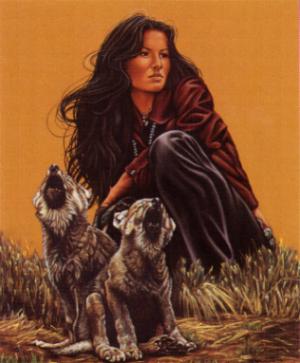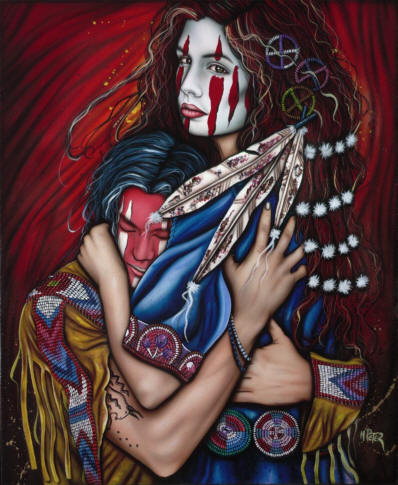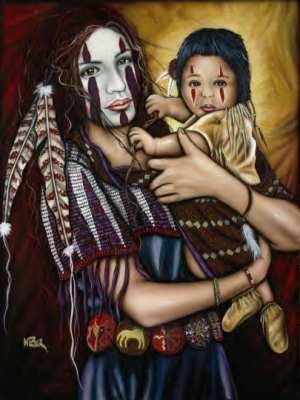|
NATIVE AMERICAN WOMEN
|
|
AllahKoliken's II
|
||
| Home | PRAYER | THE EAGLE | EAGLES OUR EYES | Our History | Wolves | FREE SPIRITS | CEROMONIES AND RITUALS | SPIRITUALITY | WE ARE ALL ONE | PRAYERS | WISDOM | Contact Us | LINKS | Thoughts Of Interest | NATIVE WAYS OF THE PAST | NATIVE AMERICAN WOMEN | LEDGENDS OF OUR PAST | VISIONS OF TIME | Religon | ||
|
DISCLAIMER |
||
|
|

|


~ Siggiez ~
|
|


|

~ Siggiez ~
HEPSIBETH BOWMAN CROSMAN HEMENWAY
1763 - 1847
By Richard S. Massey
As a descendant of Hepsibeth I was told many
stories about all of my Indian ancestors by my beloved Indian Grandmother. The history of Native Americans is sad for all
the Indian Nations. The Native people of Southern New England have suffered for 300 years. Many were sold into slavery and
the male population was decimated by wars.
Hepsibeth was a descendant of Samuel Bowman, who was one of the proprietors
of the town of Natick. This town was an attempt by Plymouth Colony in 1650 to Christianize Indians into being more like their
English neighbors. There were several of these villages in Massachusetts and Connecticut, but Natick was the first.
Shortly after the King Phillip war the Bowmans returned to their original homeland of Worcester, which was due partly
to racial strife with surrounding towns.
Hepsibeth is referred to in early newspaper articles as an Indian maiden
from Packachoag Hill. She was half white, on her father's side. It was illegal for Indians to marry white people in Massachusetts
and Hepsibeth is recorded on early town documents as Hepsibeth Bowman, daughter of Lydia Bowman. In 1789 Hepsibeth married
Jeffrey Hemenway, a mulatto who had a distinguished Revolutionary war record. She was 26 and he was 53.

Mary Musgrove was a half-breed Yamacraw Indian of the Muscogean Tribe. Her Indian name was Coosaponakesee. Her father was
a white trader and her mother a Yamacraw Indian. Mary's mother was a sister of Emperor Biem who had tried, in the terrible
war in 1715, to drive the white man out of the southeast. She had been sent to South Carolina when she was ten years old to
go to school. Mary could speak both Creek and English.
Mary was a tiny woman about five feet tall, wore her hair
in two long braids with a band of beads across her forehead, and a feather stuck into the band. She married John Musgrove,
a white trader who was the son of a South Carolina official. Mary and John's trading post was Mount Venture located on the
Altamaha River.
On February 12, 1733 General James Edward Oglethorpe (founder of the colony of Georgia) sailed with
four small boats down the coast and up the Savannah River to his new home. (Georgia was the first colony to be established
in the 18th century.) When he landed at Yamacraw Bluff, he used Mary (who was about 33 years old at this time) as his interpreter
for the first meeting with the Yamacraw Chief (or Mico), Tomochichi, an imposing man six feet tall and 90 years of age. (Tomochichi
was very interested in Oglethorpe's gun, which he called a "fire stick'. He remained a fast friend to Oglethorpe until
his death in 1739.) Since she regarded and believed in the white man strongly, she was very influential in convincing the
Yamacraw Indians to support General Oglethorpe in the settling of Georgia. General Oglethorpe regarded Mary as a valuable
interpreter and employed her for a yearly salary of one hundred pounds sterling, which in that day was equal to a great deal
more than five hundred dollars. But, Mary earned all that was paid to her and more.
Not only did she interpret for
General Oglethorpe, but she also aided in concluding treaties and aided in securing warriors from the Creek nation in the
war that occurred between the colonists and the Spaniards who occupied Florida.
When Oglethorpe left Georgia in 1743
(1742 ?) he gave Mary a ring from his finger. After malaria claimed four of Mary's sons and her husband John, she married
a man named Matthews, who also died. In 1744 she married Thomas Bosomworth, who was previously the chaplain to Oglethorpe's
regiment. Reverend Bosomworth was a very shrewd individual. Up until her marriage to Bosomworth, Mary had never closed to
labor for the good of the colony. After her marriage to Thomas, her conduct was such as to keep the whites in constant fear
of massacre and extermination.
Bosomworth set about winning the Creek Indians to his devious ways. He convinced Malatche
(brother of Mary) to have himself proclaimed as emperor of the Creek nation. Then he procured from the Creek emperor a deed
of conveyance to he and Mary of the islands of Ossabaw, Sapelo, and St. Catherine. Thomas then convinced the Creek nation
to proclaim Mary as the "Empress of Georgia." He used Mary's influence and previous rapport to his own good.
Mary, having won support of all the Indians, made instant demand for surrender of all the lands that had belonged to the
Upper and Lower Creek Indians. In August 1749 while meeting in Savannah, Mary and Thomas were privately arrested due to debts
Thomas owed in South Carolina for cattle. The Indian Chiefs and council president met on several occasions to negotiate the
return of lands to the Indians. Bosomworth repented of his folly, wrote to the council president apologizing for his wanton
conduct.
During this time Thomas continually fought to secure the money owed Mary for her services when she was working
for General Oglethorpe. Around 1759 (1757 ?), Governor Ellis settled Mary's claims by giving her 450 pounds sterling for goods
she had expended in the King's service. She was also allowed 1650 pounds sterling for her services as agent. In addition,
she was given 2000 pounds sterling from the auction sale of Ossabaw and Sapelo. A grant of St. Catherine Island was also made
to Mary Bosomworth for her many good deeds she did for the Colonists in her better days before her mind had been poisoned
by Reverend Bosomworth. The Bosomworths lived there for the rest of their lives and are buried there.


